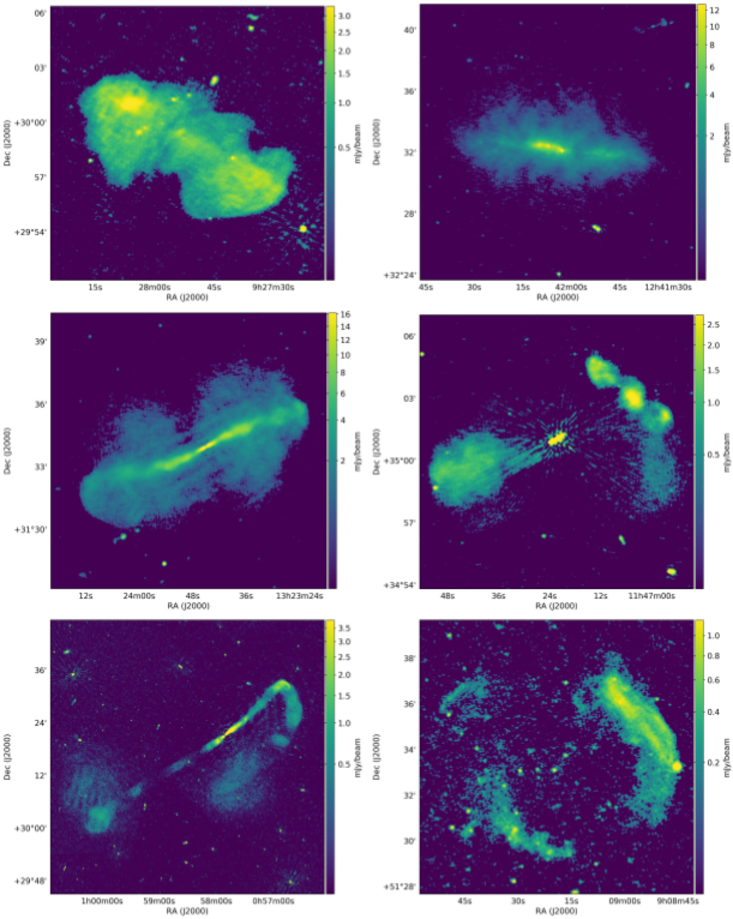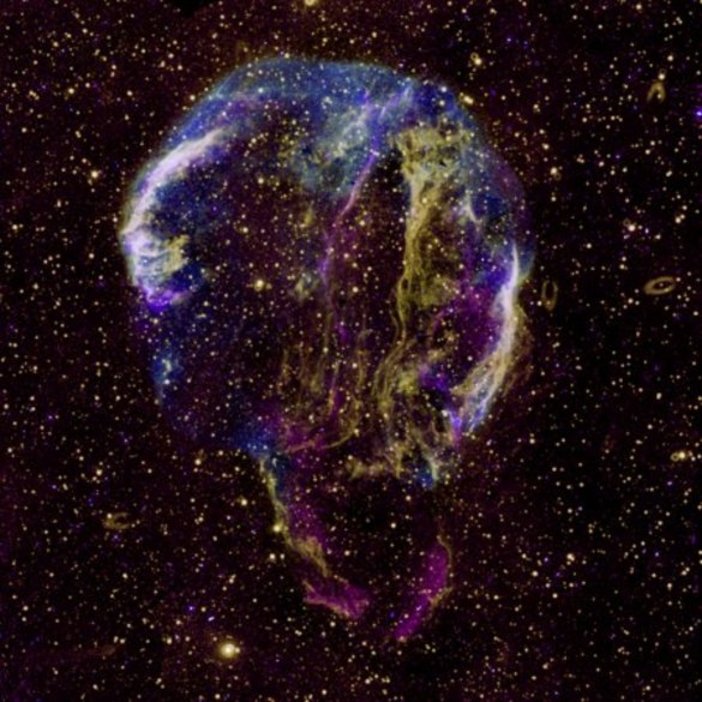Astronomy Object of the Month: 2022, May
< previous Archive next >
New radio map revealing 4.4 million galaxies
Over a seven year an international team including scientists from OAUJ has
mapped more than a quarter of the northern sky using the Low Frequency Array
(LOFAR), a pan-European radio telescope. It reveals an astonishingly detailed
radio image of more than 4.4 million objects and a very dynamic picture of
our Universe. This treasure trove of data
is now public,
so anyone can view the most exotic wonders of our intriguing Universe in a new light.

Illustration 1: LOFAR LoTSS-DR2 radio maps for the selected radio sources. Clockwise, starting from the upper left image: radio galaxy B2 0924+30, galaxy NGC 4631, BL Lacertae B2 1144+35, Abell 746 galaxy cluster, radio galaxy NGC 315, radio galaxy B2 1321+31. Credit: The Authors.
The vast majority of these objects are located billions of light years away and are either galaxies that harbour massive black holes or rapidly growing new stars. Rarer objects that have been discovered include colliding groups of distant galaxies and flaring stars within the Milky Way.
The wealth of new information in the maps is evident from a burst of recent scientific publications that make use of the radio images. Astronomers from numerous institutes have explored all types of objects with these data. For example, the team published the largest ever studies of colliding clusters of hundreds to thousands of galaxies offering new insights into magnetic fields and high energy particles in the Universe’s largest structures.
Previous results include finding curious signals from nearby stars that may be induced by orbiting exoplanets; pin-pointing the slowest-spinning pulsar that challenges the current theories describing such objects; observing so-called jellyfish galaxies shedding material as they travel through the surrounding medium; witnessing eruptions of black holes that shape their local environment; probing the fabric of the cosmic web through the locations and shapes of galaxies, shedding new light on the most distant super-massive black holes in the Universe; and the discovery of so many radio galaxies of all shapes, sizes and ages that a dedicated citizen science project has been set up to help find new black holes in this zoo of objects. Whilst these discoveries are already refining our understanding of the Universe, it is also clear that the work that has been conducted to date only scratches the surface of what is to come.
To produce the map, state-of-the-art data processing algorithms were deployed on high performance computers all over Europe to process 3,500 hours of observations that occupy 8 petabytes of disk space – the equivalent to roughly 20,000 laptops. This data release, which is by far the largest from the LOFAR Two-metre Sky Survey, presents about a million objects that have never been seen before with any telescope and almost four million objects that are new discoveries at radio wavelengths. The data in the release can be used to search for a wide range of signals, such as those from nearby planets or galaxies right through to faint signatures in the distant Universe.

Illustration 2: Composition: radio (LoTSS; purple), UV (GALEX; yellow) and X-ray (ROSAT; blue) image of the Cygnus loop supernova remnant. This spectacular structure in the Milky Way is something to look forward to in future LoTSS data releases as the survey is now beginning to explore our Galaxy. Credits: Jennifer West.
Original publication: T. W. Shimwell et al., The LOFAR Two-metre Sky Survey. V. Second data release, A&A 659, A1 (2022).
The work is part of research conducted at the Department of Radio astronomy and Space Physics of the Jagiellonian University’s Astronomical Observatory. This work was supported by the Polish National Science Centre through the grants 2018/29/B/ST9/02298 and 2018/29/B/ST9/01793. The maintenance of Polish LOFAR stations is financed by the Ministry of Education and Science.
|
Krzysztof Chyży Astronomical Observatory Jagiellonian University K.Chyzy [at] oa.uj.edu.pl |


